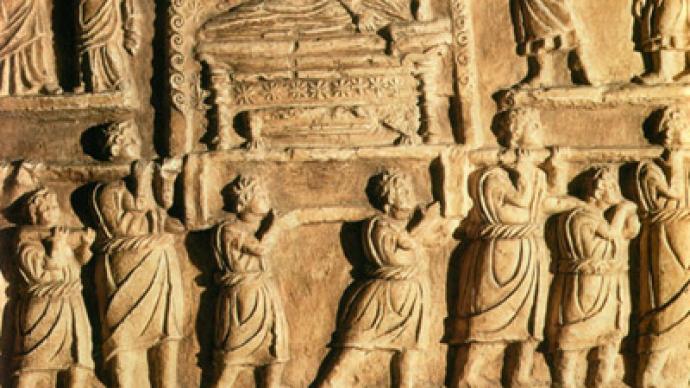Inequality in modern-day America is worse than Ancient Rome

The 99 percent has found an ally 2,500 years in the past. It just so happens that it’s with those that found themselves in the Ancient Roman plebian and slave classes.
According to research done recently by historians Walter Schiedel and Steven Friesen, cited by Per Square Mile's Tim De Chant, the income inequality gap in modern day America is far greater than the separation within the societies during the days of Julius Caesar. During the Ancient Roman Republic, says the duo’s study published in Per Square Mile, the top one percent controlled 16 percent of society’s wealth. If you fire up the Delorean and go from the Diocletian Empire to twenty-first century USA, you’ll see that things are a little more uneven. Today, that one percent on top controls 40 percent of the country’s wealth.What difference does a few dozen centuries make, though? Emperors back then had a trained arsenal of soldiers equipped with on equines with hand-trebuchets, and New York City Mayor Michael Bloomberg today calls the NYPD his own army (who come with Tasers and pepper-spray on the ready). Want more? Today the top one percent saw their incomes rise by 275 percent between 1979 and 2007. Back then, well, back then the Romans saw the rise of the Constantine. Neither, frankly, was all that pretty. Historical humor aside, the narrowing of America’s middle class and rise of poverty has been a long time in the making, even if just become more obvious in recent times thanks in part of course to the Occupy Wall Street movement’s pressing for reform. While 50 million Americans are currently living below the poverty line, in all one-in-two Americans are what the US Census Bureau calls “low-income.” In Washington DC, which is part of the wealthiest metropolitan region per-capital in the country, one-in-ten residents actually earns less than half of what would put them at the poverty line, creating an entire new class of the poorest of the poor which is only increasing as the wealth is torpedoed upwards to the top of the pyramid.In coming up with their research, Schiedel and Friesen mulled over papyri ledgers, old school estimates and Biblical passages, specifically at around the times when the Roman Empire was at its population peak — around 150 C.E. Putting together the top members of the hierarchy around that times — the patricians, senators, equestrians and decuriones — the researchers have determined that the top 1.5 percent of the 70 million or so citizens of the empire had all-in-all around 20 percent of the wealth.Despite this inequality, there was never an Occupy the Aqueducts movement or a tent city within the walls of the Coliseum — as far as we know, at least. Instead, rather, those that didn’t match up with the leading ranks were simply disregarded. As Per Square Mile puts it, the empire seems to have been “built on the backs of poor farmers and laborers,” adding, “it’s as though Rome’s 99 percent never existed.”Sounds like something right out of Fox News.















